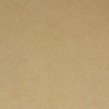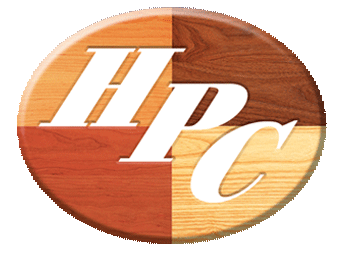|
HPC's LUMBER
|
Return Home |
 |
|
Is Kiln dried and mill manufactured to the highest lumber
standards. Typically we stock only the best grade available in
each lumber and are purchased from specific geographical regions
in order to achieve the most uniform texture and color. This
has been learned and earned over the 50+ years that we have been
manufacturing custom doors. All stock woods are "Plain Sawn"
lumbers, although "Quarter Sawn" and "Rift Sawn"
lumber may be special ordered.
Click the photo next to
each wood to view a larger sample.
|
 |
ALDER, Red
(Alnus rubra)
|
Often called West Coast Cherry,
and can be used as a Cherry substitute. This lumber is harvested
primarily in the Northwestern United States. Light reddish brown
in color with small pin knots randomly though out. Fine grained,
medium texture, with not a lot of figure, similar to Cherry.
This lumber has excellent machining quality and is easy to stain
and finish. |
 |
ALDER, Knotty
(Alnus rubra)
|
This is the "Knotty" grade
of Red Alder. It contains additional small black knots randomly
scattered though out the lumber ranging from dime to half-dollar
size. This lumber has the same characteristics as Red Alder. |
 |
ASH, White
(Fraxinus americana)
|
Most Ash grows East of the Mississippi
river and from Canada to the Gulf coast. Southern Ash will typically
be whiter in color and softer in texture. Appalachian and Northern
Ash will be grayer in color and firmer in texture. Our Ash lumber
is selected for a creamy white sapwood color. Ash lumber has
good stability and is less subject to twist or cup. Ash is a
mixture of both straight and cathedral grain figure. It has both
fine straight grain and course open cathedral grain rays. It
is rated good for machinability and is easy to stain and finish.
Ash is excellent for color washes that highlight the grain figure. |
 |
BASSWOOD
(Tilia americana)
|
Also called Linden or Limewood,
it is light weight, soft textured, but maintains a crisp shape
or profile. Color runs from creamy white to pinkish brown with
brown or black streaks. Mostly straight fine grain that takes
stain or paint well. It has excellent machinability and is also
well suited for carving. |
 |
BIRCH, White
(Betula alleghaniensis)
|
"Natural" Birch contains
the normal combination of lighter sapwood and darker brown heartwood
color tones. Our NorthernYellow Birch is selected for
creamy white sapwood color. It has a fine straight grain with
little figure and is a medium texture. Birch is a stable strong
wood that is rated good for machinability and is excellent to
stain or paint. |
 |
CHERRY
(Prunus serotina)
|
American Cherry from the Appalachian
region of the country has been the preferred location because
it more closely color matches the veneers and plywoods made from
Cherry. Natural Cherry's color varies from a creamy white sapwood
to light red or dark reddish brown heartwood. Our Cherry is selected
to be a medium light red heartwood color with minimum sapwood.
Cherry has a smooth fine straight grain with a nice figure. It's
rich color is normally clear finished, but it can be stained.
Cherry is medium to firm texture and has excellent machinability. |
 |
HICKORY, Calico
(Carya spp.)
|
Possibly the hardest American hardwood.
Most mills do not separate Hickory and Pecan once the bark is
removed for the logs. "Natural" Hickory has both creamy
sapwood and brown heartwood coloring. Our Hickory is FAS grade,
knot free, and "Calico" in coloring, ie, most boards
will contain both creamy sapwood and some brown heartwood. This
allows us to randomly mix both colors in the doors resulting
in a very warm and inviting product. It has a moderately open
grain and good figure. Because of its' hardness and catchy grain,
Hickory is difficult to machine and work. However, It is strong
and tough. Ease of finishing is rated fair. All sapwood or all
heartwood can be special ordered. |
 |
MAHOGANY
(Khaya ivorensis)
|
It has been increasingly difficult
to import "Genuine Mahogany" from the Central and South
American countries plus the quality of the lumber has continued
to deteriorate. Therefore, most American manufactures have turned
to African Mahogany, which is a True Tropical Mahogany.
Both species are from the same botanical family. The color and
workability of African Mahogany very closely resemble the performance
of Genuine Mahogany and the wood finishes well. Color will vary
from light reddish brown to deep rich red. Reasonably straight
grain and a prominent figure. It is a medium to firm textured
wood. |
 |
HARD MAPLE,
White
(Acer saccharum)
|
Also called Rock Maple. This is
a hard, strong wood that has many uses. It is from the Hard Maple
tree that we get Maple syrup. Hard Maple lumber has many special
decorative grain figures, including fiddle back, quilted and
birds-eye. Our Northern Hard Maple is selected for creamy sapwood
color and without the brown heartwood. It is fine grained with
a smooth finish and is a hard texture. With the decorative figures
removed by the mills, what is left is a moderate grain figure.
Machinability is good but staining can be difficult, but not
impossible. |
|
SOFT MAPLE,
White
(Acer rubrum)
|
White or Stain Grade Soft Maple.
This wood has many of the same characteristics as Hard Maple,
but is not nearly as hard or as strong. Both Red Maple and Silver
Maple are marketed as Soft Maple. However, we prefer to buy only
Northern Soft Red Maple because it has superior machining and
finishing characteristics, compared to Silver Maple. Our Soft
Maple is fine grained with not much figure and a smooth finish.
It is selected for the creamy sapwood color and is easy to stain. |
|
SOFT MAPLE,
Paint Grade
(Acer rubrum)
|
This is the nonwhite Northern Red
Soft Maple, same as above. This lumber has the brown heartwood
mixed with the creamy sapwood and has the same fine grained smooth
finish that makes it an excellent paint grade wood. |
 |
RED OAK
(Quercus,spp)
|
These trees grow in the northern,
appalachian and southern regions of the United States. There
are approximately 14 different species of Oak that are harvested
and marketed as Red Oak lumber, but they are all in the Genus
Quercus family. No other lumber is better known or more widely
used than Red Oak. With such a wide variety of growth areas,
the color range of Red Oak varies from southern white-gray-reds
to Appalachian darker reds, to northern light red and reddish
tans. We prefer to stock a FAS grade northern Red Oak selected
for uniform light red color, with no creamy sapwood. The northern
Oaks are slower growth and therefore have tighter grain and a
medium firm texture. Red Oak has both fine straight grain and
course open cathedral grain patterns. It has excellent machinability
and is fairly easy to stain and finish. |
 |
WHITE OAK
(Quercus,spp)
|
American White Oak is the premier
species of the Oak family. It is highly favored by the Europeans.
Again it has a wide growth range, from the southern to the northern
USA. Much like its' cousin, Red Oak, there are 16 different species
of Oak that are cut and marketed as White Oak and they are all
in the Genus Quercus family. The heartwood of the White Oak tree
is very water resistant and is a nut brown color. We stock a
tight grained, selected uniform color, heartwood White Oak from
the Appalachian region. It has excellent figure and is slightly
easier to machine than Red Oak. White Oak is fairly easy to stain
and finish. |
 |
PECAN, Rustic
(Carya, spp)
|
Like its' cousin Hickory, Pecan
belongs to the Genus Carya family. This lumber is not harvested
from trees bearing Pecan nuts. Pecan nuts are harvested from
grafted hybrid trees originating in nurseries. Wild Pecan trees
of the forest produce a nut that is edible but bitter in taste
and of little commercial value. Because they are so similar in
color, grain, figure and texture, lumber mills normally will
not separate Pecan and Hickory sawn lumber. We prefer to sell
"PECAN" as a "Rustic" grade of wood. "Rustic"
meaning; maximum color variations, knots, and if requested, voids.
Pecan like Hickory is difficult to machine and work. However,
It is strong and tough. Ease of finishing is rated fair. Pecan
has a moderately open grain and good figure. |
 |
PINE, Clear
(Pinus strobus)
|
Eastern White Pine is a true White
Pine and is soft in weight, light in color, easy to machine and
glues well. It has a yellowish straw to reddish tinged color
with widely spaced fine smooth grain. There are only three true
White Pines; Eastern White Pine, Idaho White Pine and Sugar Pine.
We prefer to buy a northern grown Eastern White Pine because
of its' smooth finish and ease of painting or staining. |
 |
PINE, Knotty
(Pinus strobus)
|
This is the same clear Eastern White
Pine as above, only it is selected to have random tight knots
in the lumber. It has the same color, grain and finishing characteristics
as the Pine. |
 |
POPLAR,
Paint Grade
(Lirodendron tulipifera)
|
Yellow Poplar, by its' name, would
lead us to believe it belongs in the true Poplars Genus Populus
family that includes Aspen, Carolina Poplar and Cottonwood. But
Yellow Poplar is a member of the Magnolia family and most botanists
prefer to call it the Tulip Tree or Tulip Poplar. Today, Yellow
Poplar is one of the most important trees in the lumber industry.
The wood is free from resin, kiln dries easily, machines and
glues easily and is fairly stable. It has a fine smooth grain,
soft texture with a pale yellow-green color. The northern and
appalachian Poplar does not have the black and purple coloring
that occurs in much of the southern Poplar. |
 |
WALNUT
(Juglans nigra)
|
American Black Walnut is the most
respected North American hardwood, with a reputation that dates
back to the 16th century. When fresh cut, the sapwood of Walnut
is nearly white and the heartwood is a beautiful warm brown.
The mills use a steaming process that "caramelizes"
the sugars in the sapwood and blends the sapwood to nearly the
brown color of the heartwood. Most woods darken with age. Walnut
is the exception and becomes lighter in color with age. Walnut
is a very stable wood with great shock resistance (think gun
stocks), and machines and glues well. It has a fine smooth grain
with some curls, waves and figure. Walnut leaves and branches
also produce a chemical named "Juglone" which fleas
hate. Spreading this foliage around your home, yard or campsite
will make the fleas flee. |
 |
MDF PANELS |
Medium Density Fiberboard,
is a manufactured material made from wood fibers, fine wood-flower
and a binder that is cooked" in a high pressure press. There
is also HDF, High Density Fiberboard and LDF, Low
Density Fiberboard. We prefer the MDF made exclusively
from Pine fiber and Pine wood-flower, because it is 60% lighter
in weight, has great machinability, and sands to a very smooth
finish. And, like all the "DF's", it does not
contract or expand because it is an inert substance, that does
not cup, warp or twist. It is exclusively for painting as stains
will not penetrate its' face surface. We wrap our MDF door panels
in a Paint Grade lumber frame to create a Paint Grade door that
is superior to an all lumber door. And, the MDF Panel Paint Grade
doors is also less expensive than an all lumber door. |



